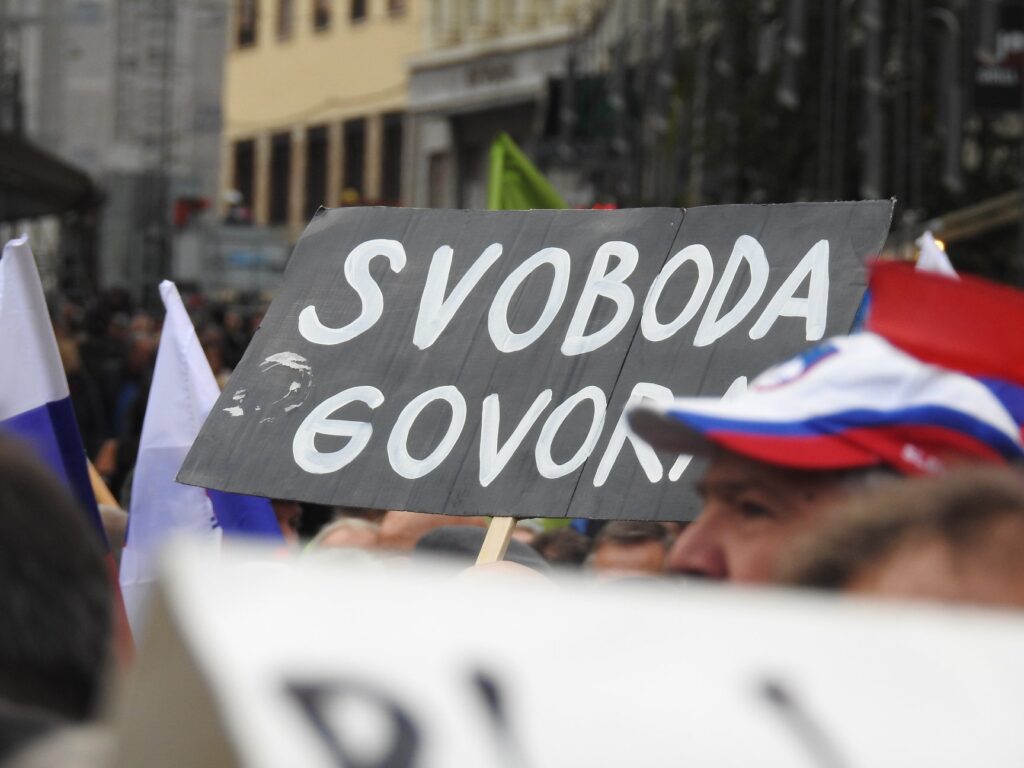Reporters Without Borders (a far-left association of international journalists) reports that Slovenia is ranked 50th on the World Press Freedom Index. Meanwhile, the Baltic countries (once part of the Soviet Union) rank very high, just behind the developed European democracies. What is wrong with the Slovenian media landscape, and what can we learn from the Baltic states?
The 3rd of May is International Media Freedom Day. Every year, the international organisation Reporters Without Borders publishes a World Press Freedom Index to mark the occasion. This year, the theme of the Index is the problem of fake news.
Slovenia ranked 50th out of 180 countries. It has moved up four places since last year. Pavol Szalai, a representative of the association Reporters Without Borders for the European Union and the Balkans, told the radio station Val 202 that the Index is also based on data from 2022: “This means that it also covers the period when the government led by Janez Janša was putting pressure on the public media with the help of its communication bodies, and when Janša, as the then-Prime Minister, continued his attacks on journalists.”
For journalists without borders, the Golob government is “liberating” RTV
It should be pointed out that Reporters Without Borders is a far-left organisation that for two years – from 2020 to 2022 – persistently repeated the lies of Slovenian activists exported abroad for daily political settling of the score with the right, without verifying the information delivered, because they believed every word from their left-wing colleagues from Slovenia.
However, they note in this year’s Index that attempts to limit the independence of the public media have not stopped. But they are not critical of the new government, saying that “the new government has tried to ensure the independence of the national media outlet Radio-Television Slovenia (RTVS),” which only reflects a complete ignorance of what the government really wants to achieve with the Radio-Television Slovenia Act (read: the complete subordination of the public service broadcasting).
Although Reporters Without Borders still sees Slovenia only through the rose-tinted glasses of Slovenian left-wing activists, it is nevertheless significant that the Visegrad countries are far ahead of us on the World Press Freedom Index. And this is not the fault of Janez Janša, nor of the current leadership of RTV.
Why are the Baltic states ahead of us?
Lithuania, for example, is in seventh place, Estonia in eighth place – and only the developed Western European countries with a centuries-long media tradition of free reporting are ahead of them. What are they doing right, then, that even far-left activist organisations do not go after them and accuse them of violating media rights, despite the fact that these are extremely neoliberal countries? What is different there?
Well, it is actually fairly simple. The Baltic states do not have their own Petričes, Koses, Odlazeks, Petans, and KB1909 funds with connections in the world socialist media international, agitating against the right-wing media scene. But they have a lot of free enterprise and foreign ownership of the media (who do not care about the day-to-day political divisions).
Lithuania and Estonia as examples of media freedom
Let’s look at the case of Lithuania. Hundreds of joint-stock companies created in the first years of Lithuanian independence were first sold to local businessmen and companies. These were then bought by large publishing houses or foreign investors by the end of the 1990s. Today, most of Lithuania’s media are owned by foreign corporations, which see the media primarily as a business opportunity rather than as a tool for political agitation or bribing political parties and punishing recalcitrant politicians. Most of the printed press is extinct (only the elderly who grew up in the Soviet Union still read it), and readers have moved online.
Estonia, too, had a rich tradition of free media critical of the rulers before the Soviet occupation, but during Russian domination, these disappeared completely, and some of them turned into instruments of the Communist Party. After 1988, when the Gorbachev administration allowed more media freedom, their media played an important role in the national liberation process, and after gaining independence, Estonia witnessed a rapid development of the media business with a proliferation of media players.
This was followed in the 1990s by growing competition between corporations until they merged into larger companies, often bought by foreign investors. The media, almost exclusively privately owned and organised in joint stock companies with several smaller private shareholders, quickly realised that print was a thing of the past and moved online – helped by the fact that 91 percent of the Estonian population is digitally literate.
What do the Baltic states have that we don’t?
The Baltic states have serious owners who see the media business as their core business to make a profit, not to influence politicians and install self-interested rulers. Instead of “scavenging” Odlazeks, they have foreign and domestic entrepreneurs who want to develop the media landscape and endear themselves to readers, listeners and viewers on the left, the right, and the centre.
This is also why even the far-left Reporters Without Borders sees them as unproblematic states, as the state has almost no influence over the media, except when it comes to issues of national security (e.g., in 2016, there was a raid in Lithuania, where six journalists were arrested, who turned out to be Russian double agents). So, the question of trust in the media is simple: it is gained through fair work and private ownership.
Andrej Žitnik


